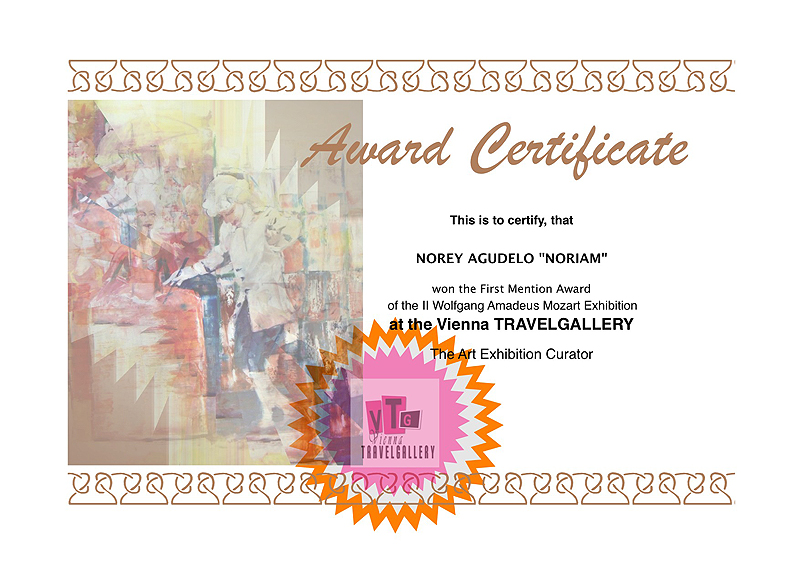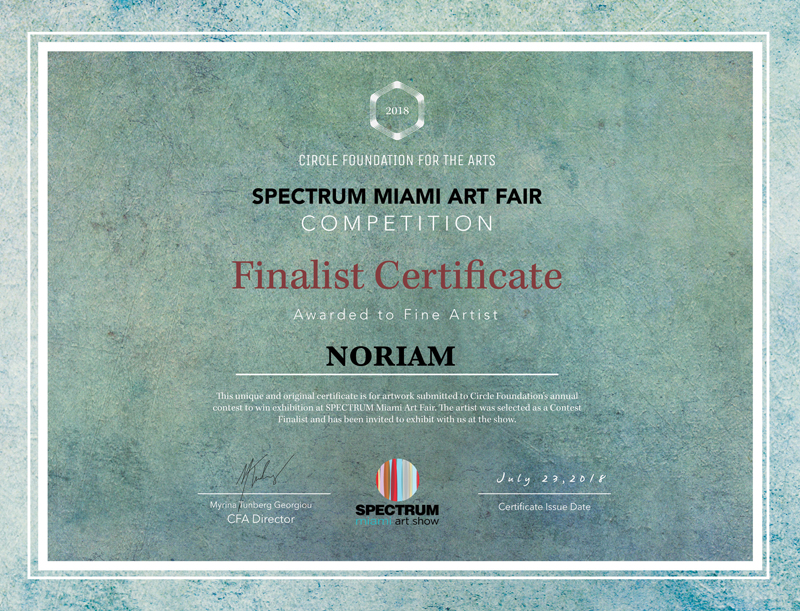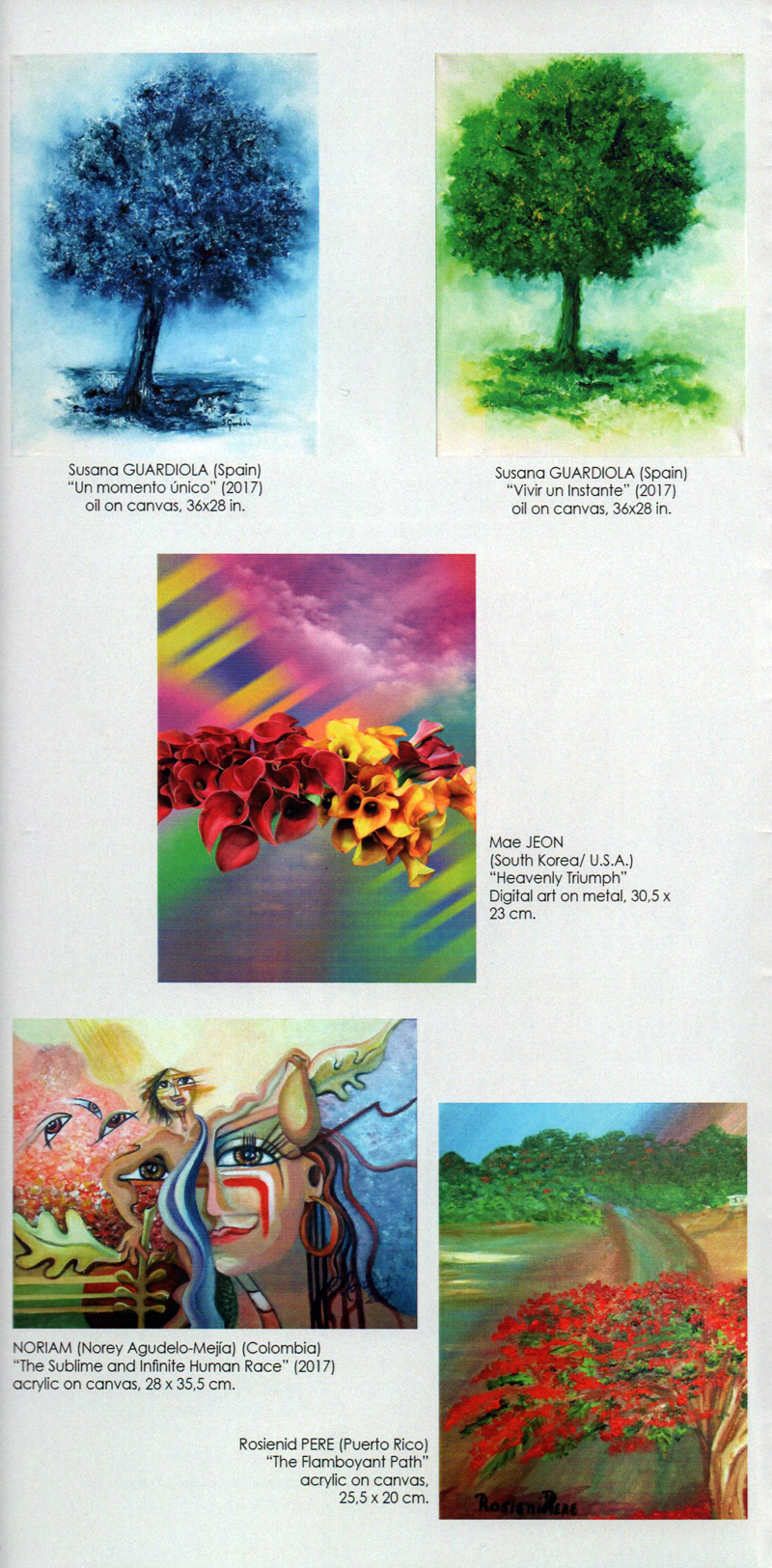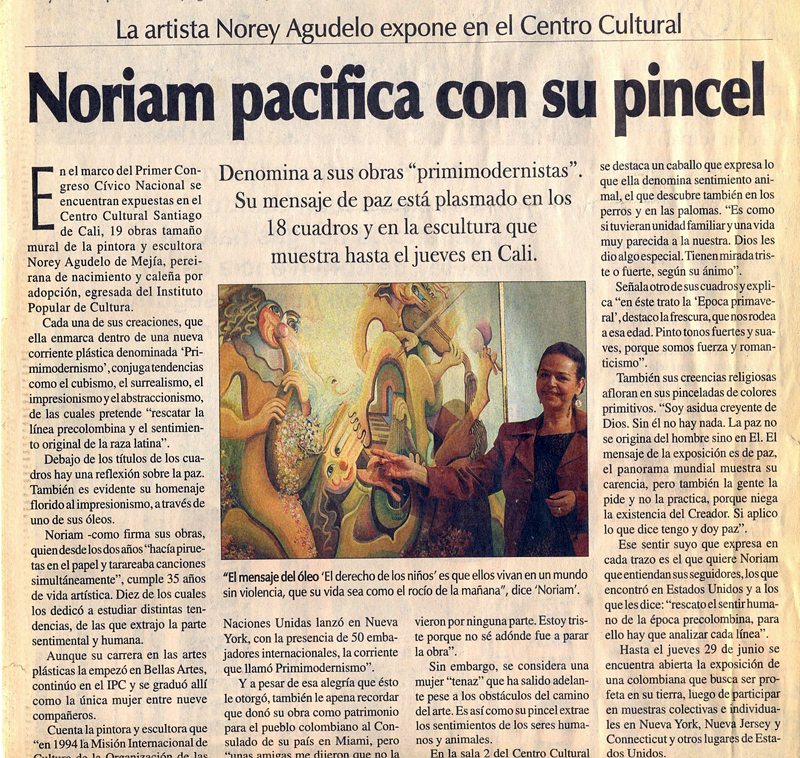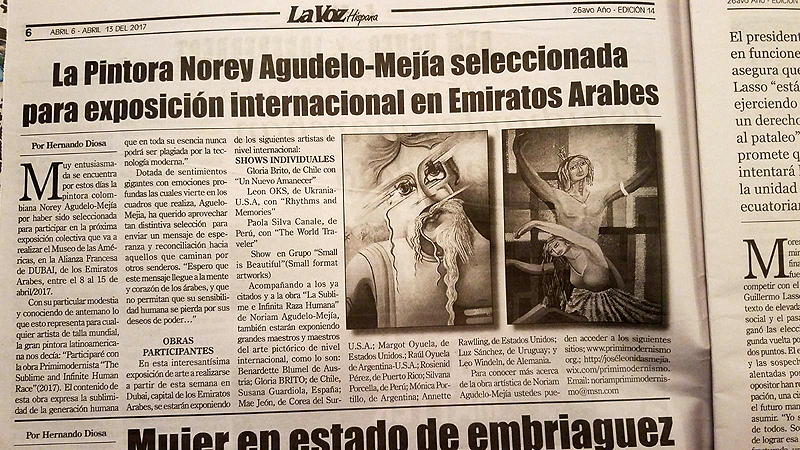 |
|
|
|
|
|
|
|
|
|
|
|
|
|
|

1980-2020
www.primimodernismo.org
It is an honor to share this international celebration of the 40th Anniversary of Primimodernism 1980-2020, as, in 1980, in the Alternate Room of the Capitol Hill of Valley, Colombia, the Colombian visual artist Norey Agudelo, "Noriam," founded the movement of Primitive Modernism, El Primimodernismo. ( www.primimodernismo.org )
Noriam is active in the USA and many countries. In Dubai, United Arab Emirates March 2020, she received an Award for Excellence. She is an active member of the Cultural Council of Palm Beach, a Member of the National Museum of Women in the Arts of Washington DC, an Honorary Member at the Museum of the Americas, and was selected and pictured at the "The Best Artists Golden Book 2020" by The Museum of The Americas. In 2018, Noriam received an award as a Finalist in the Miami art competition "Impulse Arts". In 2014 she received an award at the international exhibition "Amadeus Mozart Award" in Vienna. She became an art professor at Yale University, for the development of art programs within the New Haven community. She is about to publish her book about Primimodernism.
Noriam Agudelo defines Primimodernism as follows:
"Primimodernism was the last "ism" movement founded in the 20th century, for the unifying of currents and trends from Primitive, Pre-Columbian, and Classic, through Modernism. As the starting point of a new "Ism" she presented it to the public on March 24, 1980 in Cali, Colombia, as the result of a five-year personal research (1974-1979), conceived holistically
and eclectically. Let us remember that the visual arts challenge the continuity of history and transform its course. Since the late eighteenth century, the art world has searched exclusively for legitimate individuals who freely express their feelings, by allowing them to respect their vision and thus lead them to fulfill their objectives. Many movements in art have risen as protests against the stasis which eventually establishes in each succeeding movement.
“In historical context, Romanticism was the first cultural movement to emerge in the late 18th century that broke with the traditional values of its time. Previously, the Enlightenment and Neoclassicism Movements had as their main objective a protest against pure traditionalism and its questionable rules, to demand the freedom of feelings that would conceive of the human as
a being in their environment, and therefore for humanity to achieve its intrinsic and tangible contents. In a unique way, this would negate any kind of controversy. These previous movements originated in England and Germany and had their full development in the early 19th century, manifesting themselves with the emergence of the avant-garde currents of the twentieth century. One of these currents was Surrealism, which came about because of its extreme freedom of human sensitivity; it was a movement that faced the most difficult controversies, but nevertheless achieved the beginning of new alternatives for future generations.
“These are the developments upon which I've based my own work to innovate a new trend that unifies the core of the most important visual arts in history from its origins and into the 21st century. Primimodernism also pursues the restoration of the origins of visual art, merging them with the main artistic trends and currents that have emerged over time. These are combined with the pragmatism and hypothesis of human values extracted and condensed from their origins to the present day. All its tangible and aesthetic contents differ from other visual trends that stand out over time.
“The expressions here, through two-dimensional images and three-dimensional objects, stimulate a great diversity of feelings in the observer, achieving a conjugation of work, artist and viewer in a mysterious and infinite space. Two mural-sized, oil on canvas paintings, "Human Values" (1985) and "The Human Rescue" (1987), explore the means to be alive and productive in a resilient environment, and meet the characteristics of Primimodernism by deforming of the human body and using figures that alternate with different backgrounds colors and textures from ancient and modern times, combined in a single scenario.
“Some of the most important objectives of Primimodernism are: (1) To restore the foundations of the origin of visual art, represented in pre-Columbian art and later primitive manifestations. (2) To restore the "Human Values" (Ethics and Principles), which represent the core of society, but which are also the innate qualities to which human beings adhere in the midst of a very complex world. (3) To encourage the general public to compensate for the social coexistence of the individual in order to achieve true resilience for present and future generations. And (4) To convince artists and teachers to maintain their interest in visual arts research, a momentous result, such as "Primimodernism."
“This proposal is to promote Primimodernism at an international level, showing the tran-scendence of its content, using it as a bridge of communication between the past and the present, as an invitation to all government agencies, artists, museums, galleries, and cultural entities, to unify efforts to integrate this new trend into the visual arts. Primimodernism is also
a setting to stimulate the public and reinforce the intrinsic values of the human being."
* * * * * * * * * * * * * * * * * * * * * * * * * * * * * * * * * * * * * * * * * * * * *
Thanks to Noriam's dedication, she has received many awards and recognitions around the world. In 2006, she was nominated for the Prince of Asturias Awards in Spain, and in the same year was named for the most prestigious prize in the Colombian Ministry of Culture. In 1991, she received the invitation from the United Nations Committee in New York to present Primimodernism at their 50th anniversary, bringing much excellent commentary, as the first international presentation of The First Primimodernism.
I would like to please spread this international celebration of the 40th anniversary of The Primimodernism ( 1980-2020) (www.primimodernismo.org) to all media and friends and to everyone in this time of pandemic. We support those who are still active and dedicated to fine art in the world: "Noriam", is one of them and I send from the artist a brotherly embrace for all from Palm Beach, County, Florida, USA where she currently lives.
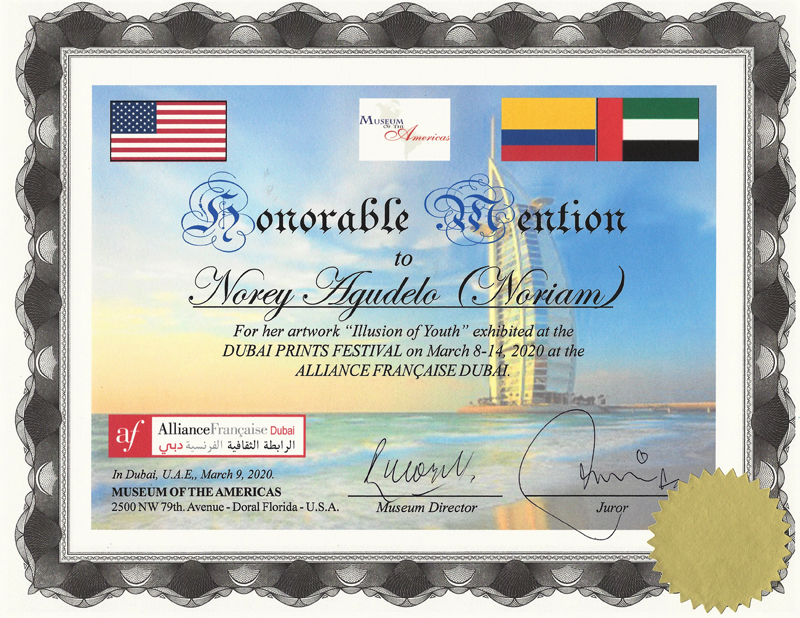
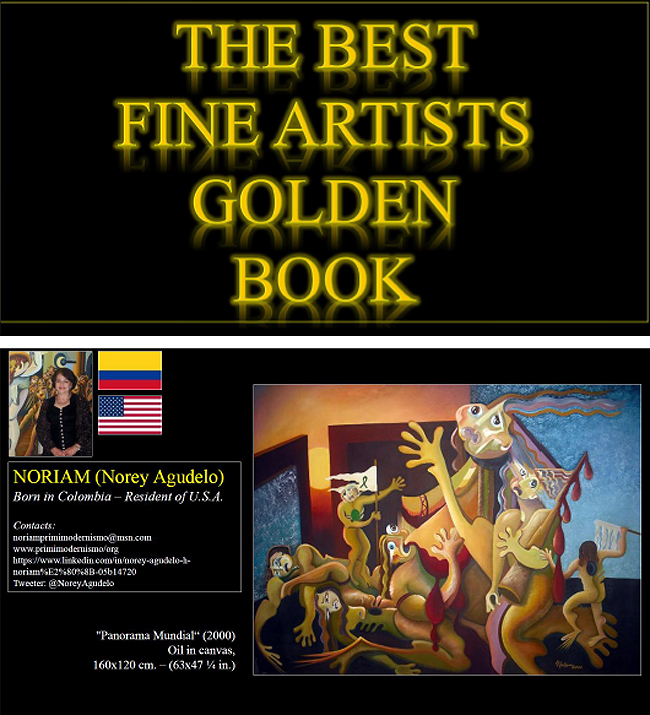
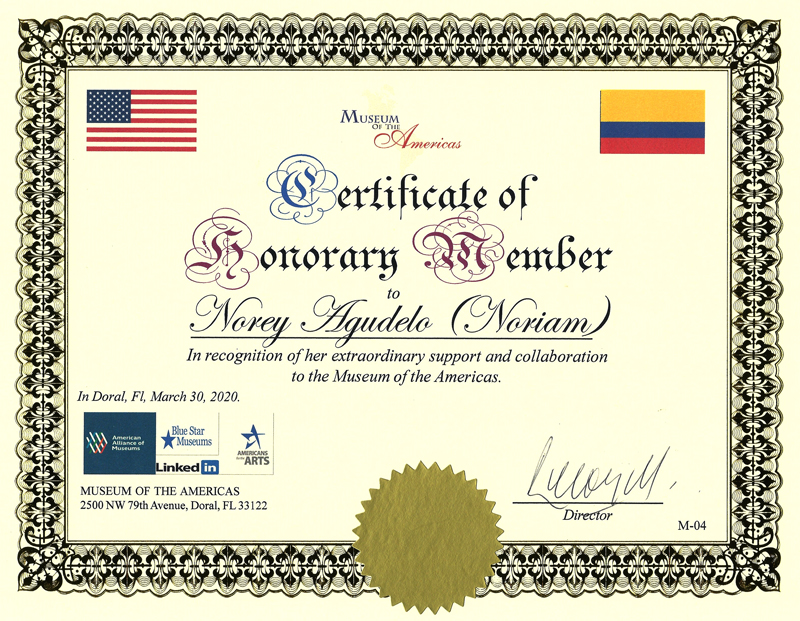
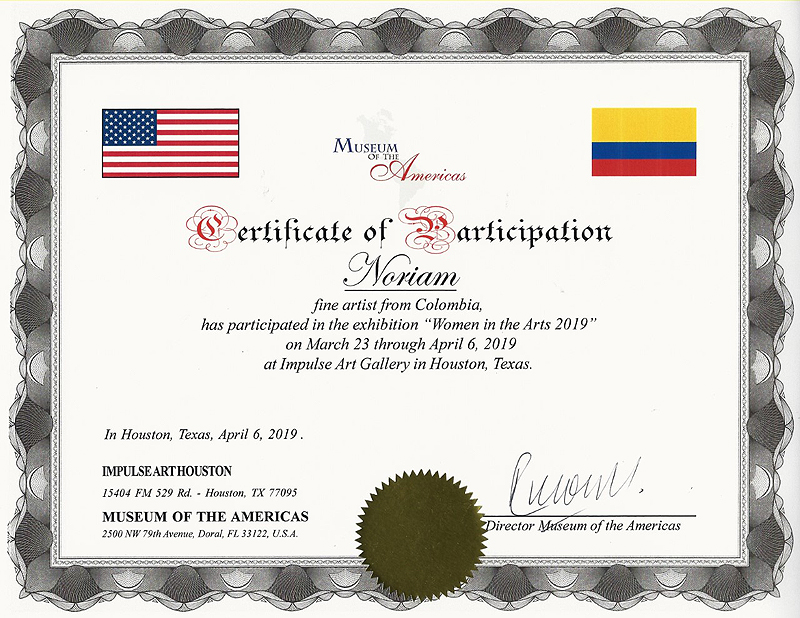
|
